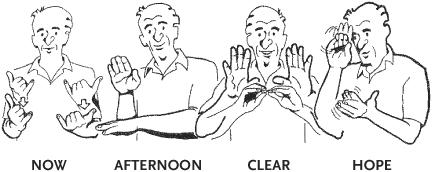The American Sign Language Phrase Book (15 page)
Read The American Sign Language Phrase Book Online
Authors: Lou Fant,Barbara Bernstein Fant,Betty Miller

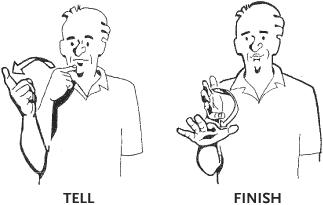
The statement above is a simple declarative statement of fact, so you may assume the subject is "I." If the intent were "You told him," then the sentence would be:
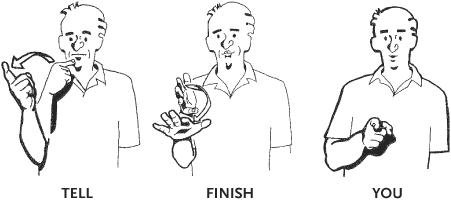
The second person singular pointing pronoun is usually dropped in questions, as here:
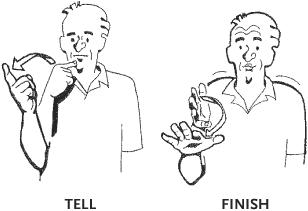
If the intent here were "Did I tell him?" then it would be signed:

Command forms rarely use pronouns:

The most common way to negate a statement in ASL is to shake the head while you are making a sign. For example, to say "I do not understand," shake your head as you sign "I understand." The shaking of the head negates the statement so that it means "I do not understand." This practice applies to nearly all signs, including negative signs themselves. If the signer adds NOT in the above statement, and simultaneously shakes the head, the negation is emphasized. We know that English grammar does not permit double negatives, but in Spanish one may say "Yo no sé nada," which literally means "I not know nothing." Spanish here may be compared to ASL, where one may sign UNDERSTAND NOTHING while shaking the head, thus creating a double negative.
In general, a negative sign follows the thing it negates. It may also come before, and it may come both before and after. For emphasis, however, it always follows the thing it negates. The latter is especially true in negative commands.
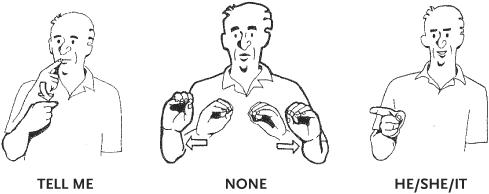

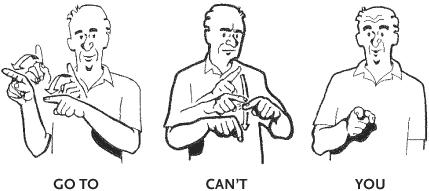
Many signs have negation built into them:
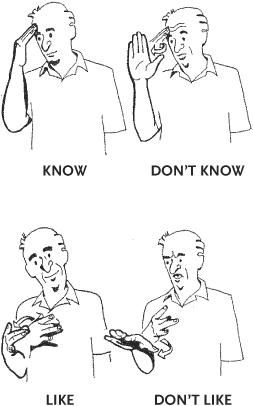
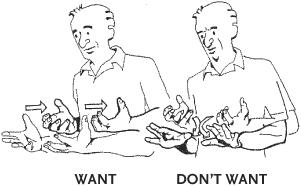
The signer should always shake the head while simultaneously making the negative form of the sign.
In addition to the final position of the pronoun, there are other signs that tend to appear in the final position. For example,

The WANT sign comes after the verb because it belongs to a class of signs that expresses obligation, necessity, feelings, moods, states of mind, and intentions. Some other signs in this class are HOPE, CAN, MUST, and WILL. They do not always follow the verb, sometimes they precede it, and often they appear both before and after the verb.
